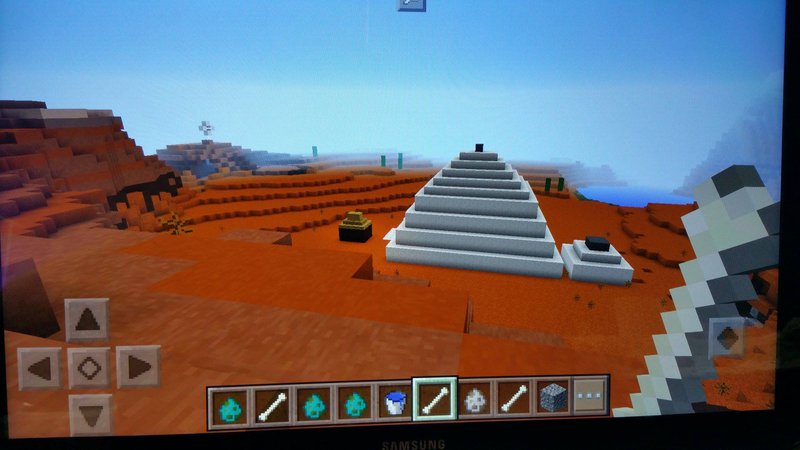Team Restless | Small Spaces, Big Ideas!
Awards & Nominations
Team Restless has received the following awards and nominations. Way to go!
The Challenge | Small Spaces, Big Ideas!
Let's Go to Mars Already!
One adult, a teenager, and a 6 year old explore how to redesign the HI-SEAS habitat using art, deductive reasoning, and a passion for making a Mars mission reality.

Our Mission
Redesign the HI-SEAS habitat with a future Mars mission in mind. And do it in a way the ensures my students Will never forget the experience.
Our Goals
- Simplify and standardize the layout of the habitat so that it can be constructed by robots.
- Make sure astronauts can customize the habitat to fit their mission and personal needs.
- Make sure the habitat is strong enough to withstand multiple missions over several years.
- Go about our work in a way that engages younger students.
- Use as many hands on activities as possible.
- Have a lot of fun.
What we did
We had a blast of course. But I also think we came up with a viable habitat. Here's some of the tools we used:
- We used Mine-craft to model the habitat virtually.
- We created a Mars scene using plaster and news paper.
- We designed and 3d printed our habitats to be displayed in our Mars scene.
- We brainstormed all the time. I mean constantly.
- We created our layouts in adobe illustrator.
- And we had a complete blast.
Designconsiderations
1.One of the most basic traits of humans is we like to change ourenvironment to suit our needs, wants, and whims. Popular media iffull of programming showing off what people have done with theirhomes or how they’ve transformed a small space to be more usable.For this reason, in designing our crew habitat for isolation studieshere at home, and ultimate use on a Martian outpost, we felt it wasimportant to give the crew a level of control over their environment.
2.Anotheraspect we wanted to design for is our need for open spaces. Yes, ifwe’re properly motivated we can subsist in a minimal space forliving and working. But we felt that a larger space would make iteasier for crews with potentially long and isolated missions. Forthis reason, we wanted to make sure the size of our habitat wasn’tlimited to the size of the delivery vehicle.
3.Wealso wanted our crew to have ownership of their habitat. We didn’tsee where we could do this fully if everything was ready for themupon arrival. We wanted to hit just the right balance of having ahabitable space at the start, but one they had to work to bring up tofull productivity. While at the same time, giving future crews theopportunity to put their own mark on the space.
4.Onedesign parameter we felt was especially important was to ensure ourcrew didn’t have to live, eat, play, and work in the same place. Assomeone who’s worked from home in the past, I personally feltstrongly about this. We want our crew to at the very least have theillusion of more space than is absolutely needed. While absoluteprivacy might not be possible, we want them to have the option ofescaping from their surroundings and mission for short times torecharge.
5.Finally,we wanted our habitat to be built by autonomous robots using as muchlocally sourced construction material as possible. We felt that byusing local regolith as a primary construction material, we couldbetter use our limited payload delivery allotment to bring missionoriented equipment and supplies, as well as extra items to make ourcrew feel more at home.
OurMethod
Asthis habitat is meant for a human crew, the first thing we did wasmake a list of everything humans need to thrive. We didn’t want abare minimum. We’re designing this with Mars colonization in mind.And humans don’t work well with just the minimum for very long.What we came up with is as follows:
- Food
- Shelter
- Water
- Atmosphere
- Entertainment
- Friendship/relationships
- Energy
- Infrastructure
- Accessibleinformation
- Amission
Wedecided early on that we didn’t want to answer the question of howto solve these design issues using data or inquest. We wanted to doit with art. We wanted to simply start creating things. But as wecreated, we would asses what we’d done and adjust it as neededuntil we had a workable vision. We used the following artisticmethods:
- Drawingand sketching using paper and pencil.
- Buildingand modeling the habitat and environment using Mine Craft.
- Verballybouncing ideas off each other.
- UsingFusion 360 to create 3d models for 3d printing.
- Creatingscenarios where we had to close our eyes and walk through imaginaryscenes while describing what we saw, felt, needed, and desired.
- Builta miniature martian landscape using newspaper and plaster.
- Andextensive use of multiple whiteboards
OurResults
Isshort, we settled on a three story habitat, including a subterraneanlevel, built mostly of sandbags, a ground level with the outer walls packed with sand, and a top level that's actually a BEAM unit. We also decided rather than having internal walls, we would have support columns with re configurable semipermanent walls and doors. This way the habitat can be mass produced and configured on site. This also means the habitat can be reconfigured when the mission changes, or just when the current floor plan is getting people down.
Made by
Carson White
Edward Greene
Joe Greene
Can't wait for Space Apps 2018.
SpaceApps is a NASA incubator innovation program.